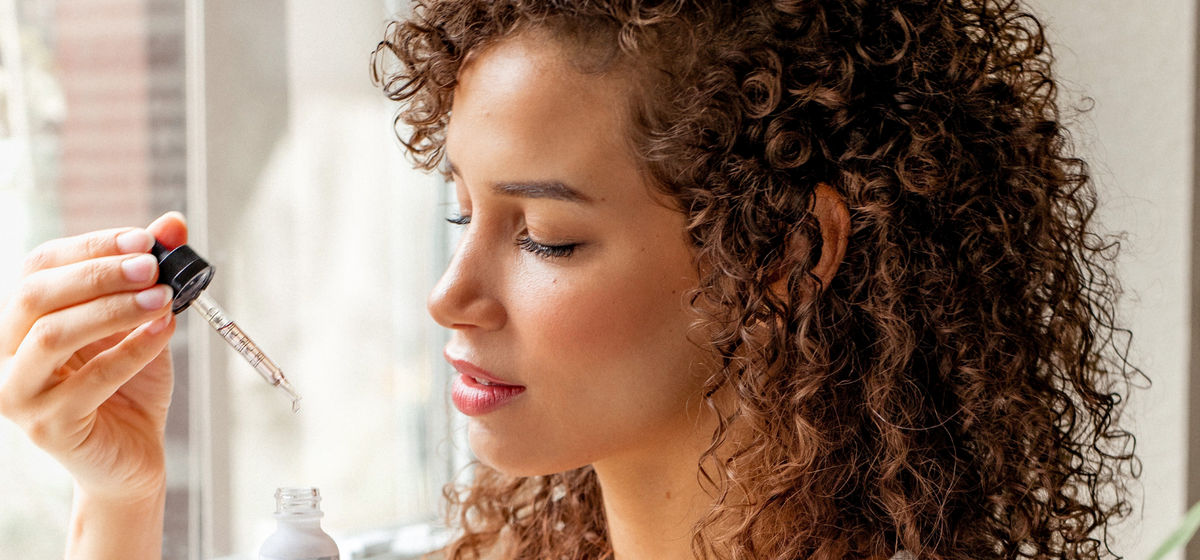The pH Level Of Your Skin And Why It Matters

pH level might sound like it has more to do with chemistry class than a beauty routine but it’s a crucial part of healthy skin.
It’s the difference between a happy, hydrated complexion and skin that’s dry, flaky, breaking out and incredibly sensitive. Let’s take a look at the pH level of your skin and why it matters.
What does pH balance actually mean?
pH stands for ‘potential of hydrogen’. It refers to the concentration of hydrogen in water and pH level is a measurement of how alkaline or acidic a substance is. The scale ranges from 0, which is very acidic, through to 14, which is very alkaline.
So what does the pH have to do with our skin?
Our skin’s pH level is determined by the acid mantle. The acid mantle is a protective barrier for our skin, think of it as your skin’s wall between you and the world! Its role is to maintain hydration levels while keeping out external nasties like bacteria, pollution and allergens. When it’s working as it should, it does a great job at fending off all the bad stuff while keeping moisture in.
Your acid mantle is at its healthiest and ‘balanced’ when it’s on the slightly acidic side of the pH scale, with a pH of around 4.5 - 5.5. The slightly acidic nature of your acid mantle means it’s not a very hospitable place for bacteria and fungi, which stops them growing like crazy all over your skin.
How does your skin’s pH become unbalanced?
Your skin’s acid mantle is delicate and it’s quite easy for pH levels to become unbalanced. Factors like UV rays, ingredients in skincare, pollution and a change in season can all throw the pH balance out.
As mentioned out earlier, 4.5 - 5.5 is a healthy range so as the pH begins to slide further to either end of the scale, either too alkaline or too acidic, this is where problems begin.
As the acid mantle begins to breakdown, all those nasties it did such a good job of keeping out, find their way in and moisture seeps through the cracks in the acid mantle. Your skin becomes irritated, flaky or super oily with breakouts and heightened sensitivity.
Signs your skin is too alkaline
It’s more common to have overly alkaline skin than skin that is too acidic. Many soap type skincare products have highly alkaline formulations. These products strip your skin of the important natural oils that cover the surface of your skin called lipids. These lipids are part of your acid mantle and play a key role in keeping the protective barrier strong and healthy.
Use products that are too alkaline, cleansers are a big culprit, and you’re actually eroding the acid mantle and lipids. Once the protective barrier is compromised, skin becomes more vulnerable to infections and loss of hydration.
Any cleansers that give your skin a ‘tight’ feeling afterwards are likely highly alkaline. Sodium laureth sulfate (SLES) is found in many cleansers, it’s the chemical that creates the foamy bubbles, and is responsible for messing with your skin’s pH balance.
Generally, skin that is always dry, tight or dull in appearance has a pH level that is too alkaline.
Signs your skin is too acidic
On the other end of the scale is skin that is too acidic. This isn’t as common as skin that is too alkaline but signs of unhealthily acidic skin include acne, breakouts and an oily, sensitive complexion.
Excessive use of skincare with ingredients including alpha hydroxy acids, beta hydroxy acids, retinoic acid and amino fruit acids can lead to problematic, overly acidic skin.
Going a little crazy with the DIY home skincare recipes (hello, lemon juice lightening treatments) can send your pH levels diving too far south into the acidic zone too.
The Balancing Act
So, how to keep your pH levels happily balanced? Keep an eye on the pH level of the products you use on your skin. If your skin is feeling dry and tight, steer clear of highly alkaline foamy, soapy feeling cleansers that will only make it worse. Choosing a gentle, low foaming cleanser instead will help bring back balance to the pH level.
Give your acid mantle all the extra support as you can by choosing the right moisturisers that help rebuild this protective barrier, rather than depleting it. Some natural oils work especially well with the skin’s own sebum including jojoba, coconut, argan and olive oil.
Antioxidants like vitamin A, C and E can help strengthen your acid mantle too by protecting skin cells from environmental stressors like exposure to UV rays, pollution and free radical oxidation. Karinda’s Rejuvenating Serum contains Kakadu Plum and Quandong extract, these incredible Australian native fruits are potent sources of natural vitamin C.
We hope we’ve helped demystify what the pH level of your skin is and why it’s so important to keep it balanced!
Leave a comment
Comments will be approved before showing up.
Also in News

3 Big Skincare Mistakes You Don't Want To Make

Active Ingredient Percentages: What You Need to Know


